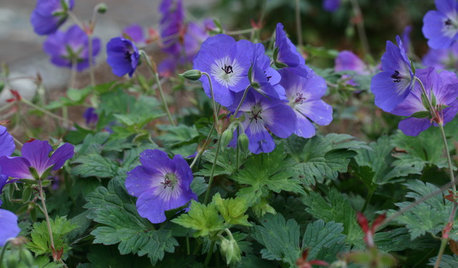Lasagna garden over bermuda (ok, it didnt work)
Nancy Fryhover
14 years ago
Related Stories

SMALL KITCHENS10 Things You Didn't Think Would Fit in a Small Kitchen
Don't assume you have to do without those windows, that island, a home office space, your prized collections or an eat-in nook
Full Story
GARDENING GUIDESGarden Myths to Debunk as You Dig This Fall and Rest Over Winter
Termites hate wood mulch, don’t amend soil for trees, avoid gravel in planters — and more nuggets of garden wisdom
Full Story
KITCHEN DESIGNSo Over Stainless in the Kitchen? 14 Reasons to Give In to Color
Colorful kitchen appliances are popular again, and now you've got more choices than ever. Which would you choose?
Full Story
KITCHEN DESIGNKitchen of the Week: Making Over a Rental for About $1,500
Fresh paint, new hardware, added storage, rugs and unexpected touches breathe new life into a Los Angeles apartment’s kitchen
Full Story
FALL AND THANKSGIVINGIt's Black and White and Fall All Over in a Holiday-Happy Home
Get inspired for budget-friendly fall decorating by a resourceful stylist's thrifty but sophisticated adornments
Full Story
GARDENING GUIDESGreat Design Plant: Knock Out Roses
As glorious as their high-maintenance kin for a fraction of the work, Knock Out roses make even beginners look like garden stars
Full Story
GARDENING GUIDESGreat Design Plant: Milkweed
Quit cringing. This not-weed plant is a sight to behold in the garden, has a delicious vanilla scent and is a magnet for butterflies
Full Story
FLOWERSGreat Design Plant: 'Rozanne' Cranesbill
Try this vigorous scrambling beauty as a ground cover or container plant for captivating garden color all summer long
Full Story
LANDSCAPE DESIGNHow Low Can Hedges Go? Discover Unusual Garden Borders
Short enough to step over, high enough to be a stretch ... check out these radically different hedge styles and tell us your opinion
Full Story
GARDENING GUIDESLush, Foodie Abundance in a Small Urban Garden
This modest backyard garden provides its owner with fruit and vegetables all year round, thanks to an innovative low-maintenance approach
Full StorySponsored
Franklin County's Preferred Architectural Firm | Best of Houzz Winner
More Discussions






sopamanda
Okiedawn OK Zone 7
Related Professionals
Otsego Landscape Architects & Landscape Designers · Saint Charles Landscape Architects & Landscape Designers · Wixom Landscape Architects & Landscape Designers · Coeur d'Alene Landscape Contractors · Kaysville Landscape Contractors · Kerman Landscape Contractors · Medford Landscape Contractors · Rochester Landscape Contractors · Albemarle Decks, Patios & Outdoor Enclosures · Bellingham Decks, Patios & Outdoor Enclosures · Brentwood Decks, Patios & Outdoor Enclosures · Clute Decks, Patios & Outdoor Enclosures · Greeley Decks, Patios & Outdoor Enclosures · Markham Decks, Patios & Outdoor Enclosures · Saint Louis Park Decks, Patios & Outdoor EnclosuresOklaMoni
Lisa_H OK
tulsabrian
oklibrarian
Macmex
pegsol
Okiedawn OK Zone 7
chickencoupe
Okiedawn OK Zone 7
chickencoupe
Okiedawn OK Zone 7
chickencoupe
Okiedawn OK Zone 7
chickencoupe
AlyoshaK
Okiedawn OK Zone 7
slowpoke_gardener
Okiedawn OK Zone 7
AlyoshaK
chickencoupe
AlyoshaK
AmyinOwasso/zone 6b
Okiedawn OK Zone 7
AmyinOwasso/zone 6b
chickencoupe
AmyinOwasso/zone 6b